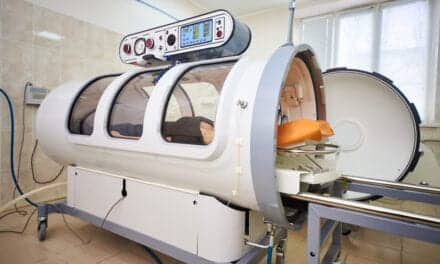
The image is a culture of neurons that have been exposed to GDF10 and have grown more connections as a result. (Photo courtesy of UCLA)
Researchers have identified a particular molecule that they suggest may signal brain tissue to form new connections to compensate for damage and to undergo repair after a stroke.
This molecule, known as growth differentiation factor 10, or GDF10, previously had no known role in the adult brain, according to researchers at University of California Los Angeles (UCLA), who performed the study on brain tissue from mice, monkeys, and humans.
“The brain has a limited capacity for recovery after stroke,” says S. Thomas Carmichael, MD, PhD, the study’s senior author, in a media release from University of California – Los Angeles Health Sciences.
“Most stroke patients get better after their initial stroke, but few fully recover. If the signals that lead to this limited recovery after stroke can be identified and turned into a treatment, then it might be possible to enhance brain repair after stroke,” adds Carmichael, professor and vice chair for research and programs in the UCLA department of neurology.
The study appears in a recent edition of the journal Nature Neuroscience.
In the 5-year study, Carmichael and his research team began by determining which molecules become more prevalent in the brain during the recovery period after a stroke, and listing all of the genes that are up- or down-regulated.
According to Carmichael in the release, researchers believed that one of the molecules on the list could be a signal telling the brain to repair itself after a stroke, and they screened for the molecules that saw the biggest increase in the brain after stroke. After finding that GDF10 was a possible signal for brain repair, the team analyzed the molecule in a petri dish.
“We found that GDF10 induces new connections to form in the brain after stroke, and that this mediates the recovery of the ability to control bodily movement,” Carmichael states in the release.
Finally, the team identified all of the molecules that are turned on or off by GDF10 in brain cells after a stroke and compared the cells’ RNA to RNA in comparable cells during brain development and normal learning, and to RNA in the brain cells of people with other diseases.
They found that GDF10 regulates a unique collection of molecules that improves recovery after stroke, the release explains.
According to a media release from the National Institutes of Health, researchers also suggest that GDF10 may be important for functional recovery after stroke. The team treated mouse models of stroke with GDF10 and had the animals perform various motor tasks to test recovery. The results suggested that increasing levels of GDF10 were associated with significantly faster recovery after stroke. When the researchers blocked GDF10, the animals did not perform as well on the motor tasks, suggesting the repair mechanisms were impaired — and that the natural levels of GDF10 in the brain represent a signal for recovery.
The National Institute of Neurological Disorders and Stroke (NINDS), part of the National Institutes of Health, helped support the study, per the release.
“The results indicated that GDF10 normally is responsible for the very limited process of the formation of new connections after stroke,” Carmichael explains in the release from UCLA.
“Delivering more GDF10 markedly enhances the formation of new connections and does so mostly in a specific brain circuit. The formation of connections in this circuit with GDF10 administration significantly enhanced recovery of limb control after stroke,” he adds.
[Source(s): University of California – Los Angeles Health Sciences, National Institutes of Health, Science Daily]





